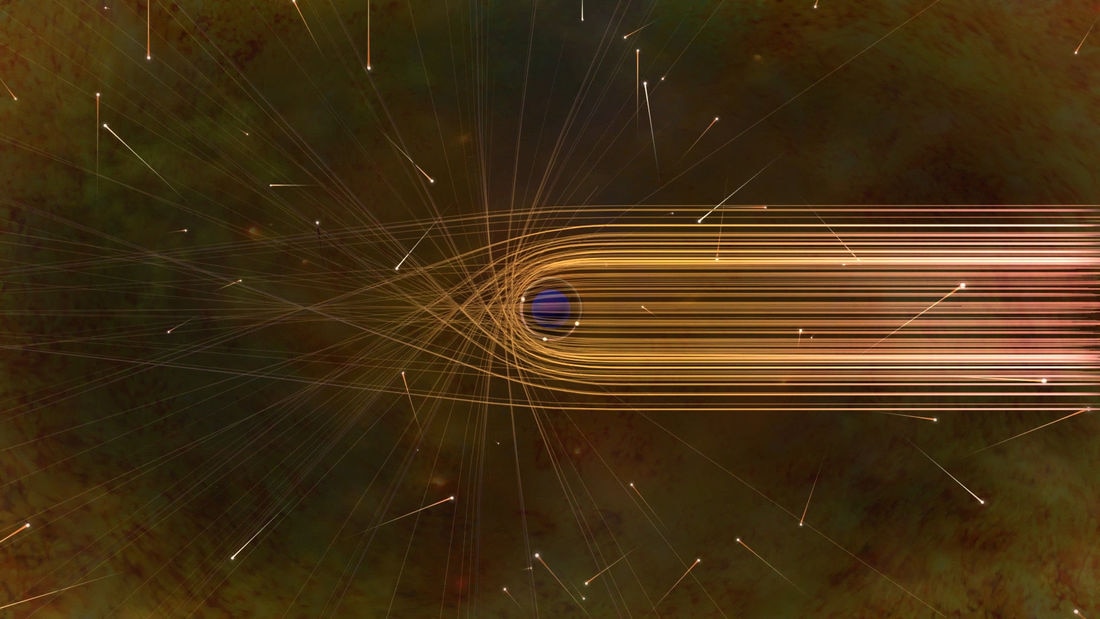 Simulation: Two Black Holes Merge
Simulation: Two Black Holes MergeExplanation: Sit back and watch two black holes merge. Inspired by the first direct detection of gravitational waves in 2015, this simulation video plays in slow motion but would take about one third of a second if run in real time. Set on a cosmic stage the black holes are posed in front of stars, gas, and dust. Their extreme gravity lenses the light from behind them into Einstein rings as they spiral closer and finally merge into one. The otherwise invisible gravitational waves generated as the massive objects rapidly coalesce cause the visible image to ripple and slosh both inside and outside the Einstein rings even after the black holes have merged. Dubbed GW150914, the gravitational waves detected by LIGO are consistent with the merger of 36 and 31 solar mass black holes at a distance of 1.3 billion light-years. The final, single black hole has 63 times the mass of the Sun, with the remaining 3 solar masses converted into energy in gravitational waves. Since then the LIGO and VIRGO gravitational wave observatories have reported several more detections of merging massive systems, while last week the Event Horizon Telescope reported the first horizon-scale image of a black hole.
| << Previous APOD | This Day in APOD | Next APOD >> |

